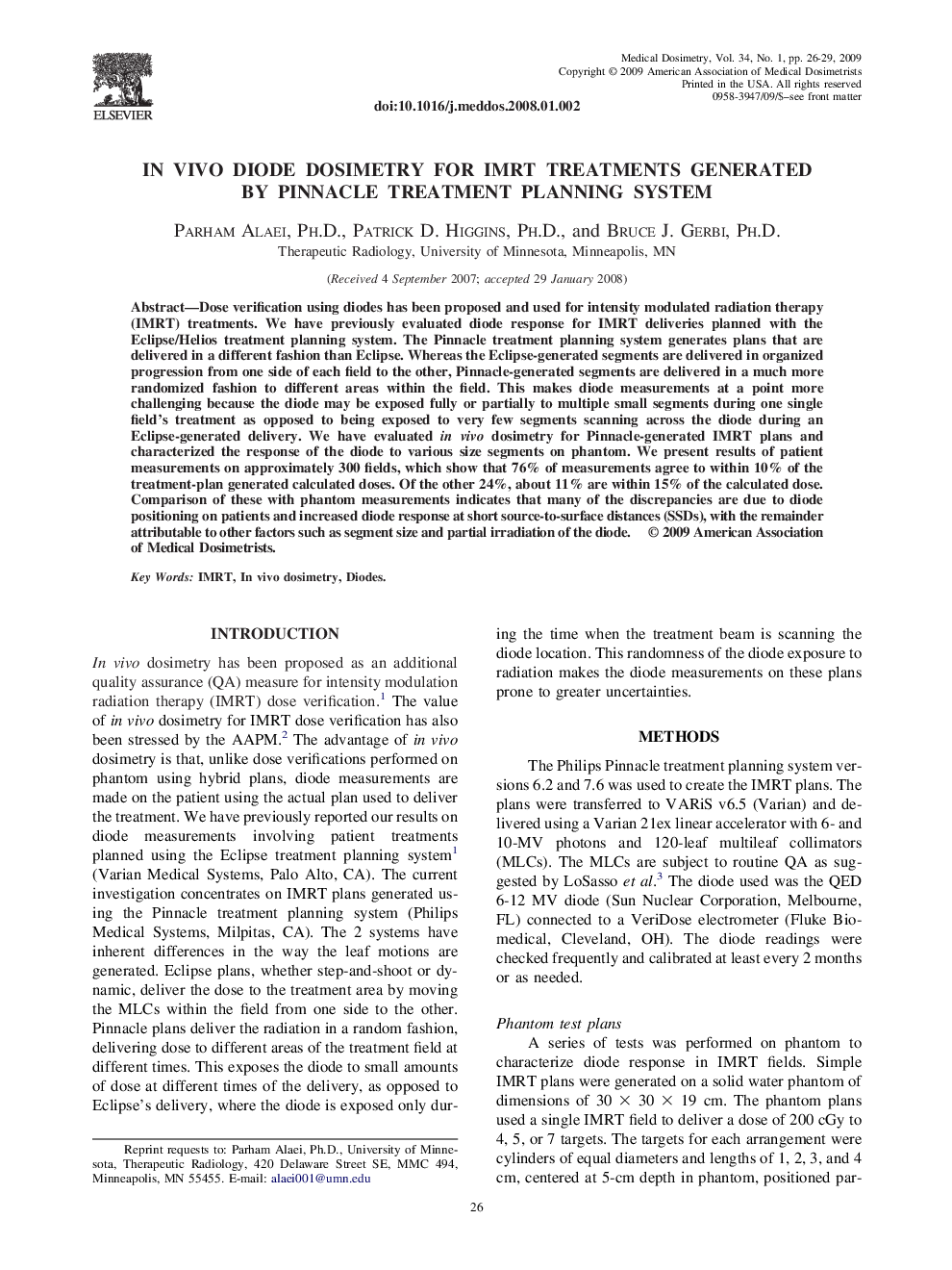| Article ID | Journal | Published Year | Pages | File Type |
|---|---|---|---|---|
| 1885453 | Medical Dosimetry | 2009 | 4 Pages |
Abstract
Dose verification using diodes has been proposed and used for intensity modulated radiation therapy (IMRT) treatments. We have previously evaluated diode response for IMRT deliveries planned with the Eclipse/Helios treatment planning system. The Pinnacle treatment planning system generates plans that are delivered in a different fashion than Eclipse. Whereas the Eclipse-generated segments are delivered in organized progression from one side of each field to the other, Pinnacle-generated segments are delivered in a much more randomized fashion to different areas within the field. This makes diode measurements at a point more challenging because the diode may be exposed fully or partially to multiple small segments during one single field's treatment as opposed to being exposed to very few segments scanning across the diode during an Eclipse-generated delivery. We have evaluated in vivo dosimetry for Pinnacle-generated IMRT plans and characterized the response of the diode to various size segments on phantom. We present results of patient measurements on approximately 300 fields, which show that 76% of measurements agree to within 10% of the treatment-plan generated calculated doses. Of the other 24%, about 11% are within 15% of the calculated dose. Comparison of these with phantom measurements indicates that many of the discrepancies are due to diode positioning on patients and increased diode response at short source-to-surface distances (SSDs), with the remainder attributable to other factors such as segment size and partial irradiation of the diode.
Keywords
Related Topics
Physical Sciences and Engineering
Physics and Astronomy
Radiation
Authors
Parham Ph.D., Patrick D. Ph.D., Bruce J. Ph.D.,
